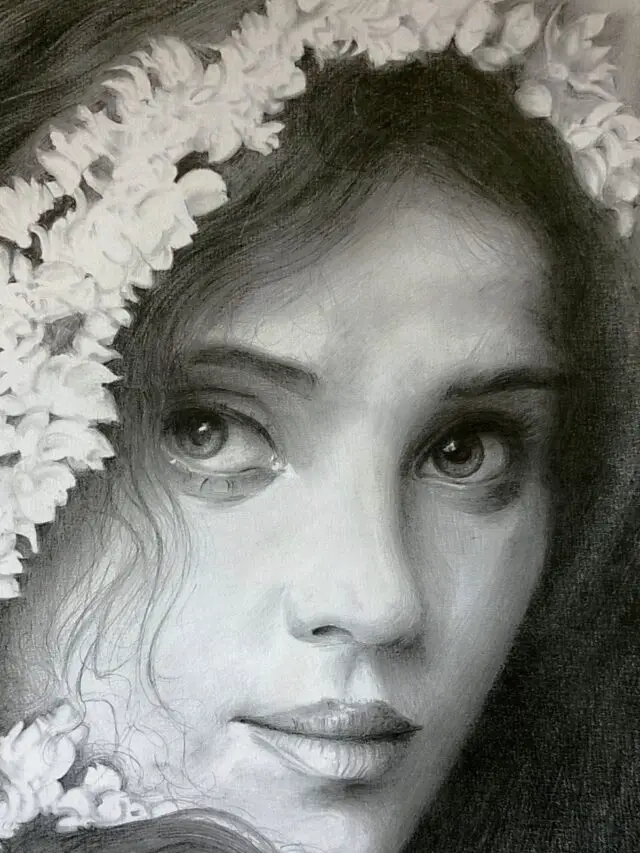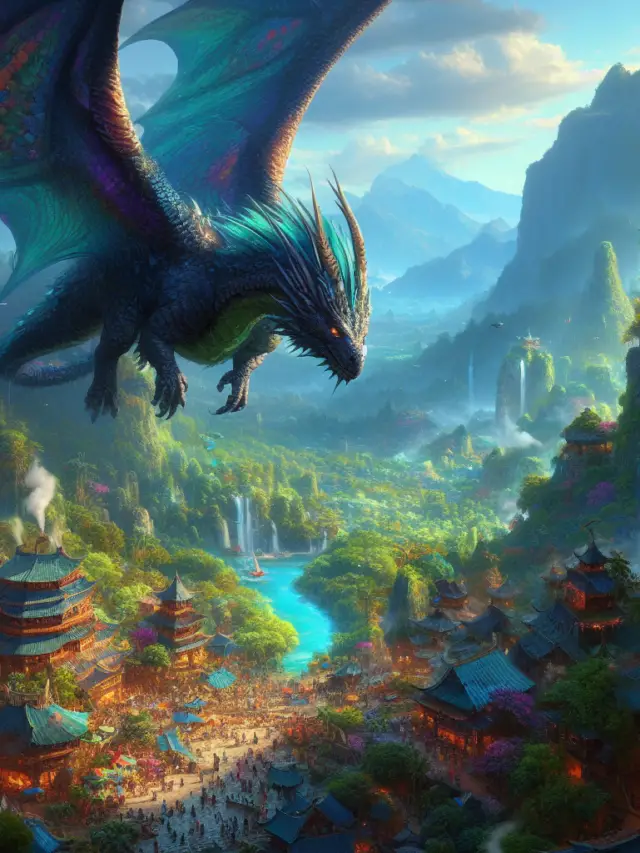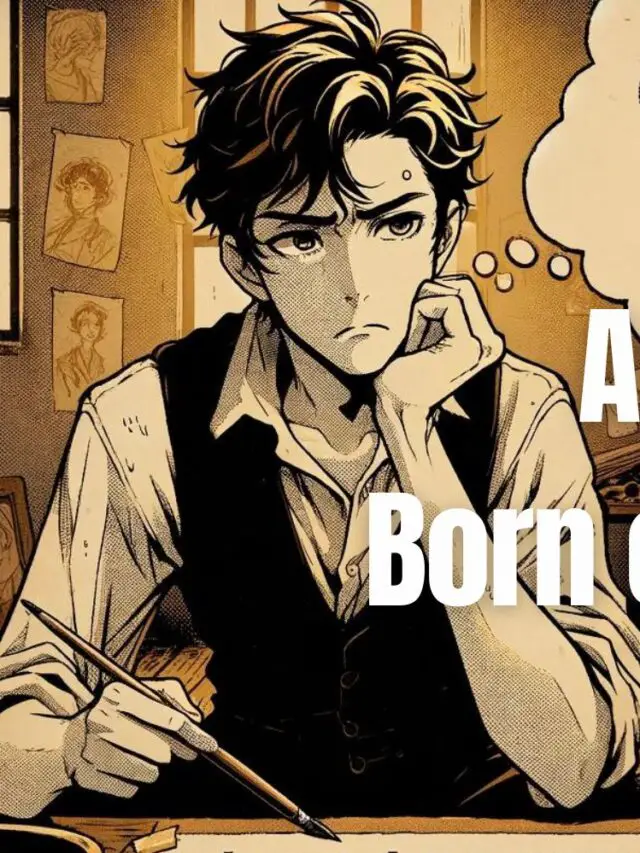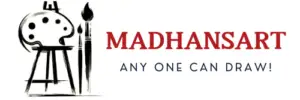Updated on: 11-Feb-2023
As someone who loves art, the idea of artificial intelligence replacing artists makes me uneasy. I can’t help but wonder what that would mean for the world of art. How might things change if AI could create pieces that are just as good or better than those made by humans?
The initial hype of AI Generate Art is gradually getting subdued now. AI Art is no longer just a buzzword. Instead, it’s becoming an increasingly important tool for artists and creators.
Table of Contents
Can Artists be Replaced by AI?
Although AI Art could potentially assist artists, it cannot completely supplant them. Creative expression and uniqueness are fundamental parts of artistry, which an algorithm can never simulate. Machines learn from data sets and recreate images; however, they cannot bring nuance or purpose to imagery with their personality and perspective.

Many may perceive that AI cannot create artwork with the same emotion and sentimentality as a human artist. However, this is not true. By learning from established techniques, Artificial Intelligence can create images analogous to humans.
Although some people think artificial intelligence will eventually replace artists, the reality is that AI cannot yet produce artwork that is truly innovative or original. No matter how authentic and accurate a piece of art created by AI look, it still needs the creativity only humans can bring to their work. Therefore, artists’ roles remain safe for now.
Please continue to read if you want to understand the potential risk and how it might change.
How is Artificial Intelligence used in the Art Field?

AI has been a trendy topic of conversation recently, and for a perfect reason, and Conversation AI like ChatGPT is changing the landscape of everything.
Artificial Intelligence’s capability to revolutionize many industries is remarkable, so much so that it has already been utilized to create beautiful pieces of art in the creative sphere. Furthermore, AI can be accessed easily online and at a reasonable cost.
A historic milestone was achieved when an AI-generated portrait produced by Obvious, a French art collective, sold for an astonishing $430K at the world’s most renowned individual AI art auction.
Although neural networks have achieved some incredible tasks, it is essential to recognize that only humans can create truly unique artwork, something these machines cannot do.
AI is no longer limited to visual artists. A wide range of contemporary creatives is utilizing its far-reaching capabilities. AI can inspire new ideas or compose music, helping every type of artist with their creative process. As the applications broaden, AI becomes an indispensable tool in artistry today.
How can Artificial Intelligence be used by Artists or Art Agencies?
Artificial Intelligence (AI) transforms how we create and experience artwork, whether painting, sculpting, or any other art medium. Here are some innovative applications of AI to give you an idea:
Generating Fresh Art Ideas

Artificial Intelligence can be a valuable asset for artists, as it uses algorithms to unearth hidden patterns in data and help create original ideas. By processing large amounts of information, AI is capable of assisting in generating creative concepts that would otherwise never come into being.
Generate New Work based on Human Inputs
Artificial intelligence can use an artist’s input to churn out images that resemble those crafted by an actual person. Thus far, several cutting-edge artists have started creating works of art with the help of AI. Combining human and machine creativity could revolutionize our approach to producing artwork and living life on a new level!
Enhance Existing Artwork Using Machine Learning

As AI advances, it’s becoming unavoidably apparent that machine learning algorithms can generate or boost artwork. This shift in our outlook on art and ingenuity is drastically reshaping the way we interact with art on a day-to-day basis.
Curate Art Exhibitions and Collections
Artificial Intelligence, with its analytics and data-driven algorithms, not only curates art exhibitions but also pieces together collections. Its analysis helps pinpoint artwork to be included and its exact location within the show or display.
Create Realistic 3D Models for Digital Art
AI technology is advancing digital art to be more lifelike than ever, allowing 3D models to be almost indistinguishable from real-life objects. This groundbreaking progress has enabled digital artists to create authentic and precise images.
Restoration of Damaged Artwork
AI can recover ruined artwork and make new pieces from nothing. Though, only some are happy about this potentiality. Some people feel that AI outmatches human creativity. Consequently, digital artists will soon surpass traditional ones.
How Does AI Art Compare to Human Created Artwork?

We are often asked how artificial intelligence (AI) compares to human creativity. It’s a valid question, particularly as AI enters more aspects of our daily lives.
We must comprehend what creativity entails to weigh in on this debate. Generally speaking, when people think of creativity, they are likely referring to artistic ingenuity, the power to conceive something never seen before in any art form, such as a painting, song, or dance.
Yet creativity is much more than simply being imaginative and innovative. It also involves devising new ideas, resolving issues with novel approaches, and interpreting events in unexpected ways to uncover unique associations. In other words, it means thinking beyond the boundaries of traditional methods and embracing outside-the-box solutions.
Artificial Intelligence Vs. Human Creativity
In some ways, AI has the potential to be even more creative than humans. For one thing, AI doesn’t have the same limitations as humans. We are limited by our life experiences and the contents of our minds.
Conversely, AI can access billions of data points and make connections that we would never be able to make.
For another thing, AI is not bound by the same rules as humans. Our prejudices, biases, and preconceptions constrain us. AI is not. As a result, AI has the potential to come up with ideas and solutions that are genuinely original.
What are the Key Elements of Creativity that AI Art Lacks?

AI art is undeniably a trend that continues to grow in popularity; even though the initial hype has slowed down, despite the advancements made with AI technology, there are still restrictions regarding creative output. For example, these critical components of creativity cannot be replicated by AI Art:
Novelty
Because artificial intelligence is limited by the boundaries set forth by its programmers, it needs help to create truly original ideas.
Imagination
Artificial Intelligence Art is limited by the data points and parameters preset before its creation. Thus, it must refrain from pursuing new ideas or novel concepts.
Adaptability
Artificial intelligence artwork needs help adapting to modern concepts and environmental changes, primarily due to its limited access to coding and regulations. As a result of this issue, AI art cannot keep up with current ideas or respond appropriately when confronted by natural stimuli.
Artsy Flair
When AI takes the wheel in art creation, creativity can become calculated and mundane due to an absence of emotion, intuition, experimentation, and irony that is naturally present with human-led pieces.
Subversion
Many artistic works defy conventions and explore imaginative possibilities, but this isn’t achievable through code-driven designs, which tend to be rigid and adhere to preset guidelines.
Intent
AI art may need to successfully convey its intended message and purpose, as it often focuses on creating attractive visuals.
As AI art continues to evolve, it is becoming increasingly remarkable. However, many of the hallmark features of creativity found in human-created artwork still need to be added to machine-generated works.
Nevertheless, there remains abundant potential for using artificial intelligence in creative endeavors.
Can AI Art replace Human Artists in the Field of illustration?

While AI can generate illustrations using current AI models, the art industry still needs to see AI replace artists. Despite advancements in AI technology, AI art generators still need a certain level of human creativity and imagination to impact the art industry.
This can be seen with AI works that cannot explore unknown territories or come off as overly planned and sterile. Additionally, issues such as recognition, imitating vs. innovating, context and meaning, expressiveness, and potential social and ethical implications would all need to be addressed if AI was ever going to truly replace artists in the field of illustration.
Can AI-Generated Art replace Human Artists in the Field of Painting?
It is currently difficult for AI-generated art to fully substitute artists in painting due to the level of creativity, imagination, and skill required. Although many artists are exploring the possibilities of utilizing an AI system, such as GANs art and like Dall-E, to generate art pieces, they can only partially replace a creative artist.
Even when used as a tool by professional artists, AI-generated painting still requires a human touch to become something visually appealing and unique that no AI system can replicate.
In terms of education and training, art schools are also emphasizing traditional methods with more focus on automation and technology being presented at later levels, which further adds to why AI-generated art may only be able to replace creative professionals in this field partially.
Can AI-Art Generator replace Artists in the Field of Art?

Modern artists can use AI-generated art to aid their creations, but it is likely only to replace them. Art’s creative and critical aspects make it unique, and an AI system can fully replicate them.
While AI-generated art may have advantages with specific tasks like pattern recognition and object classification, the human touch is still essential if one wishes to create something unique.
It would also be difficult for an entire art market to run on pure AI-generated creations, as art is one of the few industries still heavily relies on human creativity.
Can AI Art Generator replace the Human Element in the Creative Process?
Although AI-generated art can be used to create fascinating visuals and designs, it is likely incapable of replacing the human element in the creative process.
While an AI tool may be able to generate some great art pieces, it cannot come close to replicating the unique perspectives brought by professional artists who have studied and understand art.
The critical thinking and judgment required to produce a true masterpiece are something an AI system can only partially replace.
Thus, while AI systems can produce exciting results with automated processes, it is likely that they will only be able to replace artists in this field partially.
Can AI models Replace Artists and give Images an Artistic Context and Purpose?

While AI models may generate aesthetically pleasing images, there are doubts about whether they can replace artists and give images an artistic context and purpose.
Although AI can be impressive, it remains restricted in its ability to conceive art with the same ingenuity as a human artist. Furthermore, artificial intelligence lacks comprehension when comprehending an artist’s relationship and sentiment towards their artwork alongside art’s presence in our daily lives.
While AI can generate beautiful visuals, it cannot replace the unique perspectives of professional artists who have a greater understanding of art history and its influence on our everyday world.
What Impact Might AI have on the Art Market in the Art World?

Art Supply more than Art Demand
One of the most notable impacts of AI on the art world is the increasing speed at which artists can generate new works of art. With image generators and other digital technologies, an artist can now create thousands of images instantly; it would take to make just one by hand. As a result, the supply of art is increasing exponentially.
An Explosion of Unique AI Art Form
Another impact of AI on the art world is the increasingly diverse range of art forms being created. As AI algorithms become more sophisticated, they can produce images strikingly similar to those made by humans. But because they lack the intent or creative spark that artists bring to their work, these images often have different feelings or meanings. As a result, we are seeing an array of new and unique art forms AI creates.
Issue of Copyright Laws
Finally, AI is having a significant impact on copyright law and the economics of the art world. Because AI-generated art is often based on pre-existing images or collections of images, it can be tough to determine who owns the copyright to these works. That can likely lead to disputes and litigation over ownership rights, which could significantly impact the art world’s economy.
All in all, AI is profoundly impacting the art world’s economy. As AI-generated art becomes more prevalent, it will significantly influence how we value and purchase art. So do keep an eye on it in the coming years.
What Happens to Artists in Society if AI Art Substitutes Them?

While some jobs are already being lost to AI and automation, it still needs to be determined what will happen to jobs that require creative skills, such as those in the arts. After all, if machines generate multiple images in a fraction of a second, what is the future of artists in society?
There are a few possible scenarios. First, AI could speed up the artistic process, allowing artists to create more art in less time resulting in more art being produced overall, which would be positive for society.
Second, autonomous artists who rely entirely on AI for their creative output could emerge. That could lead to a reduction in traditional artists and a fundamental change in art itself.
Finally, AI-generated art could become so prevalent that it replaces human-created art, thereby increasing the monetary value of traditional art done by humans.
Ultimately, it’s impossible to say what will happen to artists in society if AI replaces them. However, one thing is sure: human beings’ role in creating art will change forever.
And while that may be scary for some, it allows us to embrace new ways of creating and viewing art. So whatever happens, let’s keep sight of the fact that art is about much more than just aesthetics; it’s about the human condition and our shared experiences.
And as long as we remember, AI will never be able to replace us altogether.
What Challenges Does AI-Generated Art Face in Replacing Artists?

AI-generated art may be gaining traction, but it faces several challenges when attempting to replace artists.
- Recognition: Many people overlook and fail to appreciate the creative works generated by artificial intelligence, believing that humans are necessary for natural creativity.
- Imitation vs. Innovation: While AI art can replicate existing styles, it needs to improve in generating original creations.
- Context and Meaning: Unless a singular artist spends years experimenting and exploring, Artificial Intelligence artworks usually lack meaningfulness or comprehension for their viewers. This is due to many programs’ reliance on pre-existing understanding databases that need an interpretive outlook.
- Expressiveness: Computers often struggle to accurately replicate human emotion, leading to an artificial product that viewers find unsettling or fail to comprehend.
- Social and Ethical Implications: Unfortunately, AI creations have the potential to be abused if there aren’t any legal safeguards in place. This means that harmful products and ideas can be released into society without limitation, leading to potentially disastrous consequences.
- Copyright & Legislation Issue: As AI art grows, it is unknown which laws and regulations should be applied when dealing with machine-generated artwork.
While AI art may have a future in the world of traditional artistic roles, there are still significant technological and moral obstacles that must be addressed before its full implementation. Moreover, given how deeply creativity is connected to humankind’s experience, it remains to be seen if an artificial substitute could ever supplant human imagination.
Why Can’t AI Art Generators Replace Artists?

When it comes to creating art, AI Art Generators must find a way to replace the originality and creativity of human artists. While they may be able to reproduce the styles of famous painters or replicate complex sculptures, they cannot produce genuinely original works of art.
Moreover, art is about more than just technique; it’s also a form of self-expression. And robots, for all their sophistication, still need to be capable of expressing themselves in the same way humans can.
In the end, it is this essential humanity that makes art so unique and what ensures that robots will never be able to replace artists fully.
How should Artists Use AI for their Art Automation?

Artists should use AI to automate their art production process and use current AI technologies to create more unique and stimulating works. AI-generated art can be used to supplement the creative process, such as by providing automated visuals for a piece or helping with pattern recognition.
AI Art generators like Deep Dream Generator can also provide contemporary artists with entirely new means of expression. Additionally, there are many ways in which AI could replace some tedious tasks that artists have traditionally done manually, enabling them to focus on the creative aspects of their work. Nevertheless, despite these advances, it is essential to remember that an AI system can never fully substitute human creativity and judgment in the artistic process.
Final Thoughts: Can Artists be Replaced by AI
AI Art technology has been around for a while, slowing down and losing its steam. While the visuals created by this tech can certainly wow us, they cannot replace the creative ingenuity that human artists possess. How about you?
The art pieces generated by AI sometimes appear mesmerizing, yet their charm is somewhat lacking without someone with an emotional connection or personal touch guiding their creation. In addition, AI art generators must improve their understanding of art’s context and purpose.
As a result, while AI technology has made strides in creating art, it can only partially replace artists’ creativity and judgment.
Although AI is starting to replace artists in some fields, it still has a long way to go before it can completely take over the role of an artist. There are many things that artificial intelligence cannot do as well as humans, such as creativity and emotional connection.
While AI can replicate certain aspects of art, it will never be able to substitute the human element entirely. As technology advances, we may see more and more AI-created artwork, but there will always be a place for traditional artists in our society.
So don’t worry, artists! Your jobs are safe for now. Keep on creating and sharing your beautiful works of art with the world.
Frequently Asked Questions
-
What is the impact of AI on the art world?
AI significantly impacts the art world, influencing everything from how art is created to how it is valued and purchased. As AI-generated art becomes more prevalent, it will significantly change the landscape of the art world.
-
What happens to artists in society if AI replaces them?
If AI completely replaces artists, it is unclear what will happen to jobs that require creative skills. There are a few possible scenarios, including that art becomes more efficient, that autonomous artist who relies on AI emerge, or that traditional human-created art becomes more valuable.
-
Can AI ever completely replace artists?
AI can never wholly replace artists because there are many things that artificial intelligence cannot do as well as humans, such as creativity and emotional connection. While AI may replicate certain aspects of art, it will never be able to take over the human element entirely.
-
Can AI produce truly original art?
AI can only partially replace artists because there are many things that artificial intelligence cannot do as well as humans, such as creativity and emotional connection. While AI may replicate certain aspects of art, it will never be able to substitute the human element entirely.
-
Can AI ever completely replace artists?
AI can never wholly replace artists because there are many things that artificial intelligence cannot do as well as humans, such as creativity and emotional connection. AI may 00replicate certain aspects of art, but it will never be able to replace artists.
-
Can AI ever completely replace artists?
AI can only partially replace artists because there are many things that artificial intelligence cannot do as well as humans, such as creativity and emotional connection. While AI may replicate certain aspects of art, it will never be able to substitute the human element entirely.





I’ve been a painter and photographer for decades. My work has sold in galleries, and as a photographer I’ve had many commercial clients. I’m also on the gallery communities for two different local community arts organizations.
I’ve been using MidJourney for a while now and I’m just started up with the Stable Diffusion. The work that these image generators create is fantastic. When we put on shows if we had painters walking through the door with paintings for our showsas good as the MJ or SD images they would fly off the walls.
Right now the prompt syntax for these AI art generators is too clunky to get consistent predictable results and also many of the images have artifacts. Those are the main things standing in the way of replacing hardest to our working in commercial or illustration applications which is the majority of working artists today. But the thing to remember is that we are not even at version 1.0! This software is all still beta! In the next few years the problems I mentioned above will be solved and then there is really nothing standing in the way of replacing a great many artists.
All this talk about human artists bringing meaning and inspiration to their work is irrelevant. It’s the meaning and inspiration that the viewer, not the artist, brings to the work that matters. Art historians have spent centuries discussing the meaning of many great pieces of art but the fact is we seldom know what was in the artist’s mind. And it doesn’t matter to the people who go to the great museums of the world to see these works. The same will be true for AI generated art – it’s meaning will be in the mind of the viewer.
“All this talk about human artists bringing meaning and inspiration to their work is irrelevant. It’s the meaning and inspiration that the viewer, not the artist, brings to the work that matters. Art historians have spent centuries discussing the meaning of many great pieces of art but the fact is we seldom know what was in the artist’s mind. And it doesn’t matter to the people who go to the great museums of the world to see these works. The same will be true for AI generated art – it’s meaning will be in the mind of the viewer.”
It does matter though. What do you think will more likely evoke an emotional response from someone: A random photo, or a photo taken by a photographer? True, art is in the eye of the beholder, but it’s hard to acquire meaning from pictures that don’t have any meaning put into them in the first place. Even some of the art created by AI was created with human guidance and perhaps weeks of finetuning, such as the piece that won the Colorado state fair competition recently. Of course, this isn’t necessarily something that AI research cannot overcome (though it gets into the wider issue of making AI conscious), but it doesn’t seem to be as straightforward as simply generating pictures.